


Paintball Skill Development
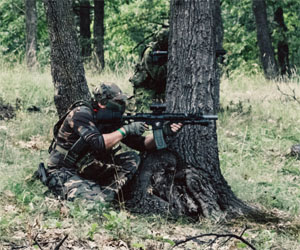
In the heart-pounding world of paintball, success isn't solely determined by the latest gear or the flashiest markers. It's the mastery of paintball skills that sets the elite players apart. Paintball is a unique blend of physical prowess, cunning tactics, and precise marksmanship, and skill development is the key to achieving excellence on the battlefield. In this article, we'll explore the essential paintball skills you should develop to become a formidable competitor and enhance your overall experience in the colorful and thrilling world of the game.
1. Accuracy And Precision
At the heart of paintball skill development lies accuracy and precision. Hitting your target with accuracy is crucial to eliminating opponents and achieving game objectives. To improve this skill, practice regularly on the field, focusing on aligning your sights and maintaining a steady hand. Over time, you'll develop a more accurate shot placement.
2. Stealth And Camouflage
Paintball involves a fair amount of sneaking around and avoiding detection. Developing stealth and camouflage skills is vital for staying concealed and moving quietly on the battlefield. Use natural cover, stay low, and minimize noise to enhance your stealth abilities.
3. Speed And Agility
Paintball requires a level of physical fitness, particularly speed and agility. Quick movement, sharp reflexes, and the ability to change positions rapidly can help you evade opponents and seize advantageous locations. Regular cardiovascular and strength training can enhance your overall fitness.
4. Communication And Teamwork
Effective communication and teamwork are essential for success in paintball. Being able to coordinate with your teammates, share information about enemy positions, and work together seamlessly is a fundamental skill. Practice using radios, hand signals, or verbal cues for clear and timely communication.
5. Tactical Awareness
Understanding the tactics and strategies that apply to different game scenarios is a key paintball skill. Familiarize yourself with a variety of tactics, such as flanking, cover fire, and suppression, and adapt them to your team's objectives and the field's layout.
6. Adaptable Strategy
Developing adaptable strategies is crucial because no two paintball games are the same. The ability to adjust your tactics on the fly in response to the evolving situation is a hallmark of a skilled player.
7. Resource Management
Paintballs are finite resources, and learning to manage them effectively is essential. Don't waste shots unnecessarily, and conserve your ammunition for critical moments.
8. Decision-Making Under Pressure
The heat of battle can be intense, and maintaining composure is a vital skill. Practice decision-making under pressure to ensure that you make sound choices when the game is at its most intense.
9. Marksmanship Techniques
Improving your marksmanship techniques involves experimenting with various shooting stances and positions. Develop skills for firing on the move, maintaining accuracy while in motion, and controlling your marker with precision.
10. Psychological Resilience
Paintball can be mentally demanding, and developing psychological resilience is essential. Maintain focus, manage stress, and stay determined even when faced with adversity.
11. Map Awareness
Familiarity with the paintball field's layout, including terrain, obstacles, and hiding spots, can give you a significant advantage. Knowing the lay of the land allows you to anticipate enemy movements and plan your strategies accordingly.
Paintball skill development is a continuous process that involves regular practice, learning from experienced players, and refining your techniques. The more you invest in honing these skills, the more formidable a competitor you'll become in the colorful and thrilling world where strategy meets adrenaline. So, load your marker, venture onto the field, and embark on the journey of sharpening your paintball skills.
A Unique Connection
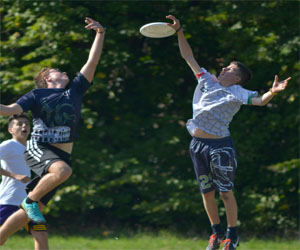 The counterculture movement of the 1960s and 1970s was a response to the prevailing social norms and institutions of the time. It championed ideas of peace, love, and freedom, and questioned traditional authority and societal values. It was during this era that flying disc sports emerged as a form of recreational and competitive activities that perfectly aligned with the counterculture's ethos.
The counterculture movement of the 1960s and 1970s was a response to the prevailing social norms and institutions of the time. It championed ideas of peace, love, and freedom, and questioned traditional authority and societal values. It was during this era that flying disc sports emerged as a form of recreational and competitive activities that perfectly aligned with the counterculture's ethos.
One of the most iconic flying disc sports, Ultimate Frisbee, was born in 1968 when a group of students at Columbia High School in Maplewood, New Jersey, came up with a new game involving a Frisbee. They emphasized self-officiation, teamwork, and a rejection of traditional hierarchy, mirroring the counterculture's principles of grassroots empowerment and autonomy. The sport quickly spread, capturing the imagination of those who sought alternatives to mainstream sports.
Disc golf, which originated in the early 1970s, shared a similar countercultural connection. The sport involved throwing a disc into a metal basket instead of a traditional hole, challenging the conventions of golf.
 The thrill of the great outdoors is deeply rooted in the elements of unpredictability and challenge. Whether you're hiking steep terrain, navigating winding rivers, or embarking on a multi-day backpacking expedition, the natural world demands adaptability and resilience. These challenges push your limits and offer a sense of accomplishment that's hard to replicate in any other setting.
The thrill of the great outdoors is deeply rooted in the elements of unpredictability and challenge. Whether you're hiking steep terrain, navigating winding rivers, or embarking on a multi-day backpacking expedition, the natural world demands adaptability and resilience. These challenges push your limits and offer a sense of accomplishment that's hard to replicate in any other setting.
Furthermore, the great outdoors is a place where you can reconnect with your most primal instincts. As you explore the wild, you'll find yourself more attuned to your surroundings—the scent of pine in the air, the call of distant birds, and the sensation of the earth beneath your feet. These sensory experiences awaken a deep connection to the environment, one that is often lost in the hustle and bustle of modern life.
The thrill of the great outdoors is also an opportunity to escape the ceaseless digital noise. With limited or no connectivity, you're free from the constant barrage of emails, social media updates, and text messages. Instead, you're left with the quietude of nature, a chance to listen to the wind rustling through the leaves and to engage in conversations that are truly face-to-face.

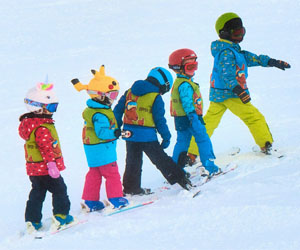

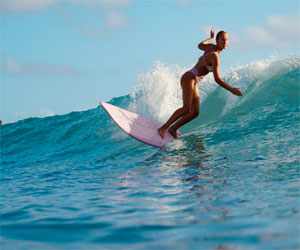
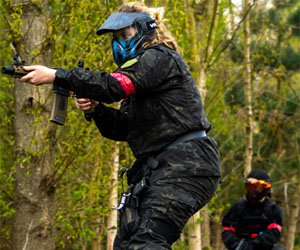

Embracing The Thrill Of The Unknown
 Rekindling Curiosity: Rediscovering the art of exploration is about rekindling curiosity, embracing the unknown, and seeking out new experiences. It's a reminder that there is always more to learn, discover, and understand, both about the world and ourselves.
Rekindling Curiosity: Rediscovering the art of exploration is about rekindling curiosity, embracing the unknown, and seeking out new experiences. It's a reminder that there is always more to learn, discover, and understand, both about the world and ourselves.
Exploring The Familiar And Unfamiliar: Exploration doesn't always require venturing into remote wilderness or uncharted waters. It can start with exploring the familiar places around us. Take a different route to work, visit a neighborhood you've never been to, or try a new cuisine. Familiar exploration can help cultivate a sense of wonder and openness to the world.
Embracing The Thrill Of The Unknown: One of the most enticing aspects of rediscovering the art of exploration is the thrill of the unknown. Whether it's a spontaneous road trip, a journey into the wilderness, or delving into a new field of study, the exhilaration of stepping into uncharted territory is invigorating.
Facing Challenges And Overcoming Obstacles: Exploration often involves facing challenges and overcoming obstacles. These trials not only build resilience but also lead to personal growth. The lessons learned while navigating through unfamiliar situations can be transformative.
Connection With Nature: Exploration frequently involves connecting with nature, whether it's hiking through forests, diving into the depths of the ocean, or stargazing in remote locations. This connection with the natural world can be spiritually fulfilling and grounding.
Cultivating A Lifelong Learning Mindset: Rediscovering the art of exploration fosters a lifelong learning mindset. It encourages us to ask questions, seek answers, and continually expand our knowledge and horizons. It's a reminder that the pursuit of knowledge is an endless and rewarding journey.
Strengthening Relationships: Exploration often leads to shared experiences. Whether with friends, family, or fellow adventurers, the connections formed during exploratory journeys can be deeply meaningful and create lasting memories.
A Journey From Novice To Pro
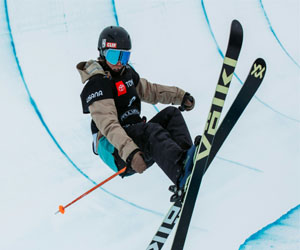 Balance: Maintaining proper balance on your skis is essential. Learn to distribute your weight evenly and stay centered on your skis.
Balance: Maintaining proper balance on your skis is essential. Learn to distribute your weight evenly and stay centered on your skis.
Turning: Start with basic wedge turns, also known as snowplow turns. As you progress, aim to transition to parallel turns, where both skis move together smoothly.
Stopping: Perfecting your stopping technique is crucial for safety. Master the art of the snowplow stop before progressing to more advanced methods.
2. Progressing To Intermediate Level
Once you've established a solid foundation, it's time to advance your skills:
Carving: Carving involves using the edges of your skis to create smooth, controlled turns. Focus on edging and weight distribution to perfect your carving technique.
Terrain Variety: Experiment with different types of slopes, from groomed runs to more challenging terrain. Learning to navigate varying conditions will broaden your skiing skill set.
Speed Control: Advanced skiers have precise control over their speed. Work on your ability to increase or decrease your velocity as needed, enhancing your overall mastery of the mountain.
3. Embracing Advanced Techniques
To truly excel in skiing, consider these advanced techniques:
Moguls: Tackling mogul fields is a hallmark of a seasoned skier. Learning to absorb the bumps with your legs and make controlled turns around them takes practice and finesse.
Powder Skiing: Skiing in powder snow is a dream for many enthusiasts. Keep your weight centered and make gentle, flowing movements to stay afloat on the soft snow.
 Rest And Immobilization: In many cases, rest and immobilization are necessary to allow the body to heal. This might involve using crutches, slings, or braces. The duration of rest depends on the injury, but it's crucial not to rush back into physical activity.
Rest And Immobilization: In many cases, rest and immobilization are necessary to allow the body to heal. This might involve using crutches, slings, or braces. The duration of rest depends on the injury, but it's crucial not to rush back into physical activity.
Physical Therapy: Physical therapy is often a cornerstone of sports injury recovery. A physical therapist can design a personalized plan to strengthen muscles, improve mobility, and restore functionality. They guide athletes through exercises that target the affected area.
Pain Management: Managing pain is a critical aspect of recovery. This may involve over-the-counter pain relievers or prescribed medications. However, athletes should follow their healthcare provider's advice on pain management to avoid potential risks.
Rehabilitation Exercises: Incorporating rehabilitation exercises into the recovery plan helps in restoring strength and flexibility. These exercises are progressive, gradually increasing in intensity as the injury heals. Athletes should perform them under the supervision of a physical therapist or trainer.
Nutrition And Hydration: A well-balanced diet rich in nutrients is essential for the body's healing process. Adequate protein, vitamins, and minerals support tissue repair and growth. Staying hydrated is equally crucial.
Gradual Return To Activity: Athletes must follow a gradual return-to-sport plan. Rushing back into strenuous activity can lead to reinjury. This plan should be developed with a healthcare provider or trainer and include a step-by-step progression.
The Foundation Of Every Great Ride
 Surfboards come in various shapes, sizes, and designs, each tailored to specific wave conditions, rider skill levels, and surfing styles. The key elements of surfboard basics include:
Surfboards come in various shapes, sizes, and designs, each tailored to specific wave conditions, rider skill levels, and surfing styles. The key elements of surfboard basics include:
Length: Longer boards are more stable and buoyant, making them suitable for beginners. Shorter boards are more maneuverable and designed for advanced riders.
Width: Wider boards provide better stability, while narrower boards are more responsive and agile.
Thickness: Thicker boards offer more buoyancy, allowing for easier paddling and wave-catching.
Tail Shape: Different tail shapes affect control and turning abilities. Common tail shapes include round, square, squash, and pin tails.
Rocker: The curve from nose to tail influences a board's maneuverability. More rocker enhances turning ability.
Fins: The number, size, and placement of fins on a board significantly affect stability, tracking, and control.
Selecting The Right Surfboard:
When choosing a surfboard, several factors must be considered, including your experience level, the types of waves you'll be riding, and your personal preferences. Here's a guide to help you select the right surfboard:
Beginners: If you're new to surfing, start with a longboard or a soft-top foam board. These boards provide excellent stability and buoyancy, making it easier to learn the basics.
The Drive For Excellence
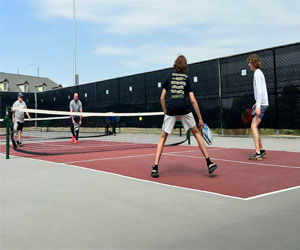 Skill Development: Pickleball requires a unique set of skills that combine the finesse of table tennis, the agility of badminton, and the strategic elements of tennis. Competitive players dedicate significant time to developing these skills, including shot placement, spin control, and precision. The pursuit of mastery in these areas is a key driver of competitiveness.
Skill Development: Pickleball requires a unique set of skills that combine the finesse of table tennis, the agility of badminton, and the strategic elements of tennis. Competitive players dedicate significant time to developing these skills, including shot placement, spin control, and precision. The pursuit of mastery in these areas is a key driver of competitiveness.
Strategic Play: While pickleball is known for its social and recreational appeal, competitive players bring a new level of strategic thinking to the game. Each point is a mini-battle of wits, with players analyzing their opponents' weaknesses, anticipating shots, and creating opportunities for winning plays. Strategic innovations such as the third shot drop and stacking are embraced to gain a competitive edge.
Tournaments And Rankings: The competitive aspect of pickleball is exemplified by the numerous tournaments held worldwide, attracting players who aim to compete at the highest levels. These events include local, regional, national, and international competitions. The excitement and prestige associated with tournaments drive players to continually refine their skills and seek recognition in the form of rankings and titles.
Team Play: Pickleball is often played in doubles format, which adds a team dynamic to the sport. Competitive players not only seek individual excellence but also thrive on building strong partnerships with their playing partners. The ability to coordinate strategies, cover the court effectively, and complement each other's strengths becomes a critical element of success in doubles play.